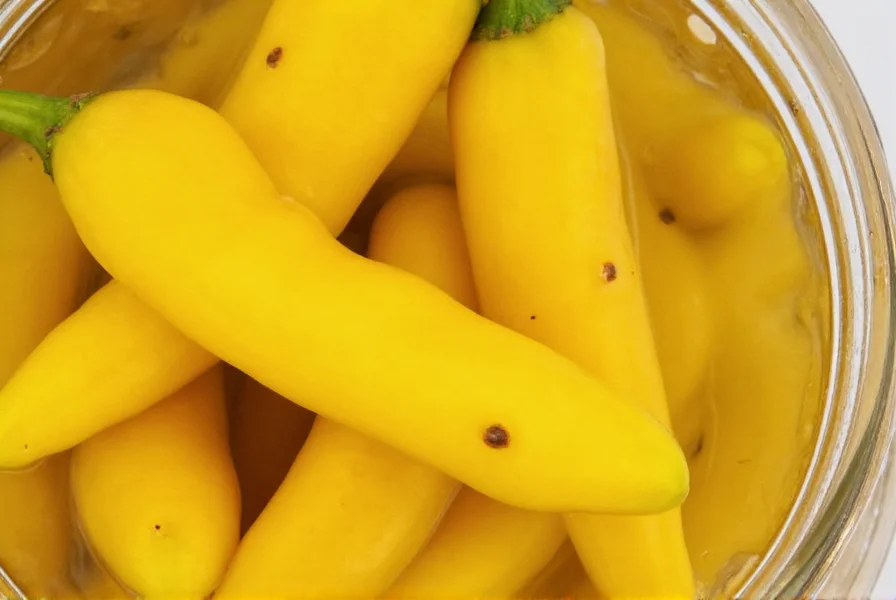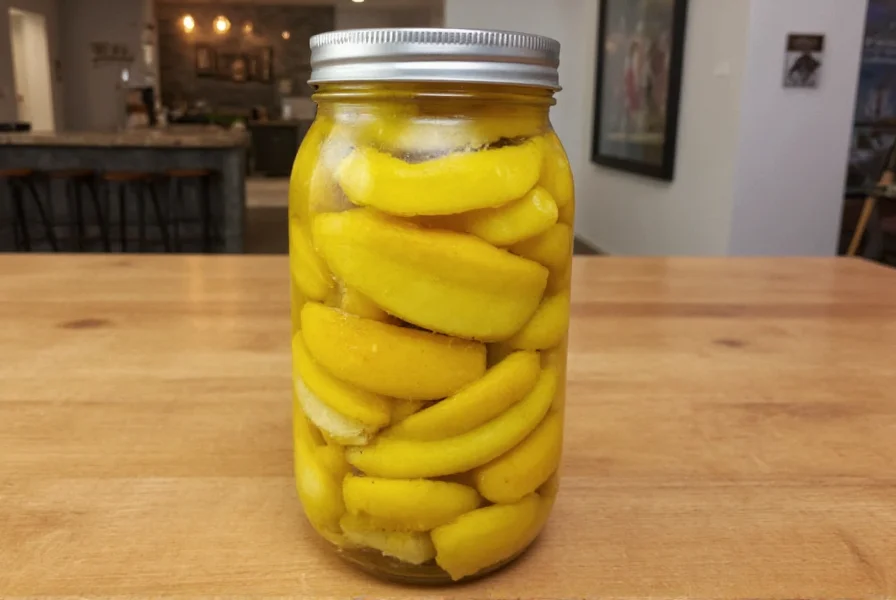These versatile peppers transform dramatically through the pickling process, developing complex flavors while preserving their crisp texture. Unlike their spicier counterparts, pickled banana peppers provide accessible heat that enhances dishes without overwhelming delicate flavors. Their unique taste profile makes them a staple in sandwiches, salads, and Mediterranean cuisine.
Understanding Banana Peppers and the Pickling Process
Banana peppers earned their name from their curved shape and yellow color resembling bananas, though they can mature to red or orange. When pickled at the yellow stage, they maintain their characteristic sweetness with just a hint of heat. The pickling process involves submerging fresh peppers in a solution of vinegar, water, salt, and spices, which preserves them while infusing additional flavor dimensions.
Properly pickled banana peppers develop a balanced flavor profile where the natural sweetness of the pepper harmonizes with the acidity of the vinegar. This transformation occurs through osmosis and fermentation processes that break down some of the pepper's cellular structure while preserving its essential characteristics. The resulting product offers culinary versatility unmatched by fresh peppers alone.
| Pepper Type | Heat Level (Scoville) | Flavor Profile | Best Pickling Stage |
|---|---|---|---|
| Banana Peppers | 0-500 | Sweet, mild, slightly tangy | Yellow (immature) |
| Pepperoncini | 100-500 | More bitter, earthy | Green (immature) |
| Jalapeños | 2,500-8,000 | Grassy, vegetal, spicy | Red (mature) |
Culinary Applications of Pickled Banana Peppers
Understanding how to use pickled banana peppers elevates everyday cooking. Their mild heat and tangy sweetness complement rather than dominate dishes. Sandwich enthusiasts appreciate their ability to add dimension to deli meats without the overwhelming heat of hotter peppers. Pizza makers often layer them atop cheese for a flavor burst that cuts through richness.
For those exploring how to make pickled banana peppers at home, the process remains remarkably accessible. A basic brine of equal parts vinegar and water with 1 tablespoon salt per cup creates the foundation. Adding garlic cloves, mustard seeds, and coriander enhances complexity without masking the pepper's natural character. The peppers maintain optimal crunch when processed using the hot pack method rather than raw packing.
Nutritional Profile and Health Considerations
Pickled banana peppers retain significant nutritional value despite the preservation process. They remain an excellent source of vitamin C and contain capsaicinoids that support metabolic health, albeit in milder concentrations than hotter peppers. The vinegar base contributes probiotic benefits through natural fermentation when properly prepared.
When considering health benefits of pickled banana peppers, note that the pickling process preserves many nutrients while enhancing digestibility. The acetic acid in vinegar may help regulate blood sugar levels, making these peppers a smart addition to balanced meals. However, commercially prepared versions often contain added sodium, so checking labels becomes essential for sodium-conscious consumers.
Storage Guidelines and Shelf Life
Proper storage determines how long your pickled banana peppers maintain quality. Home-canned versions stored in sterilized jars with proper headspace and sealed correctly remain safe for 12-18 months in a cool, dark pantry. Once opened, transfer to the refrigerator where they'll maintain crispness for 2-3 months.
Commercially prepared pickled banana peppers follow similar timelines but often contain preservatives extending shelf life. Always check for signs of spoilage including cloudiness in the brine, bulging lids, or off odors before consumption. The how long do pickled banana peppers last question depends primarily on preparation method and storage conditions rather than the peppers themselves.

Selecting Quality Pickled Banana Peppers
When determining where to buy pickled banana peppers near me, examine several quality indicators. Premium products maintain a vibrant yellow color without browning, indicating proper harvesting and processing. The peppers should appear plump and crisp rather than shriveled or soft. Check ingredient lists for minimal additives—quality products typically contain just peppers, vinegar, water, salt, and natural spices.
Gourmet markets often carry superior options compared to standard grocery stores, particularly those specializing in Mediterranean or deli products. For the freshest experience, consider farmers' markets where local producers may offer small-batch pickled peppers with unique flavor variations. Reading reviews becomes essential when purchasing pickled banana peppers online to verify quality and authenticity.
Common Questions About Pickled Banana Peppers
Many home cooks wonder about the difference between banana peppers and pepperoncini since both appear similar in jars. While related, banana peppers tend sweeter and milder, with thicker walls and a more pronounced curve. Pepperoncini display more bitterness and earthiness, with thinner walls that absorb brine flavors more readily.

What's the best vinegar for pickling banana peppers?
Distilled white vinegar (5% acidity) creates the cleanest flavor profile for pickled banana peppers, though apple cider vinegar adds subtle fruit notes. Avoid balsamic or wine vinegars as their strong flavors overwhelm the delicate pepper taste. For optimal results in how to make pickled banana peppers at home, maintain a 1:1 vinegar-to-water ratio with proper canning salt.
Can you eat pickled banana peppers straight from the jar?
Yes, high-quality pickled banana peppers are safe to eat straight from the jar as the vinegar brine preserves them effectively. They make an excellent standalone snack or quick addition to charcuterie boards. The what do pickled banana peppers taste like experience includes a bright, tangy flavor with subtle sweetness and just a hint of heat that builds gradually.
How do pickled banana peppers differ from fresh ones?
Pickling transforms banana peppers significantly. Fresh peppers taste predominantly sweet with grassy notes and minimal heat. The pickling process introduces tanginess from vinegar, enhances complexity through spice infusion, and preserves crisp texture while mellowing raw pepper flavors. Understanding what do pickled banana peppers taste like versus fresh helps in recipe planning—pickled versions work better in sandwiches and cold dishes, while fresh excel in cooking applications.
Are pickled banana peppers good for you?
Pickled banana peppers offer several health benefits while being low in calories. They retain vitamin C content from fresh peppers, gain probiotic properties from vinegar fermentation, and contain capsaicinoids that support metabolism. However, commercially prepared versions often contain added sodium, so checking nutrition labels matters for those monitoring sodium intake. The health benefits of pickled banana peppers make them a smart addition to balanced diets when consumed in moderation.











 浙公网安备
33010002000092号
浙公网安备
33010002000092号 浙B2-20120091-4
浙B2-20120091-4